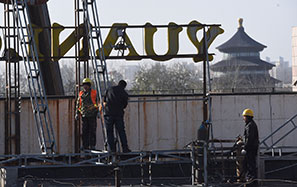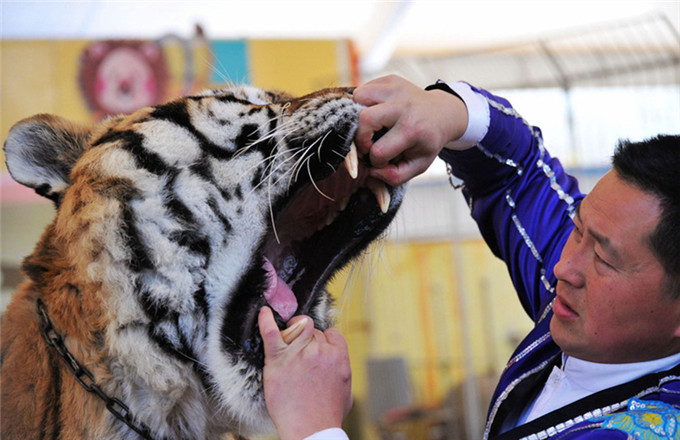When the big snore turns dangerous
Many people complain they can't get enough sleep but fail to recognized it's a problem that can shorten their lives. New forms of diagnosis and treatment offer hope to them,
Honey Tsang reports.
Kong Siu-ki didn't sleep well at nights. Neither can his family get a good sleep, when his snoring is enough to rattle the dishes.
So, Kong, portly and 54, would wake up feeling dragged out in the morning - but dismissed his problem as one of life's little irritants. He went through the day listless, feeling tired, never grasping that it was wrecking his health. Lack of sleep means the body's normal healing processes are suspended, while cognitive functions are impaired at the risk of leaving a person accident prone and hyperactive. Some specialists note that the body processes glucose more slowly in sleep-deprived individuals, risking type two diabetes. Research has shown that people who don't sleep well have a shorter lifespan.
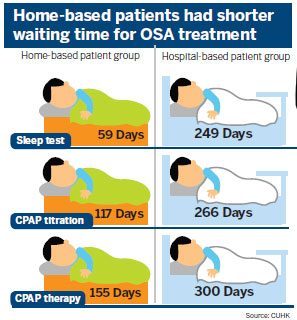
Kong already was well on his way. He was obese, hypertensive and diabetic. Still it never dawned on him that lack of sleep was contributing to his problems.
At least he decided to do something about his weight. In November 2016, he was down for laparoscopic surgery, to have an adjustable gastric band put around his stomach, to help him lose weight. Then, he learned the terrifying ramifications of his loud snoring.
Doctors assessed that he probably had obstructive sleep apnea (OSA), a disorder in which people have pauses or shallow breathing during sleep. One of the doctors issued a stark warning. To have the surgery, Kong would have to undergo anesthesia. If the OSA were left untreated, the after-effects of the anesthetic could soften his throat muscles, make them floppy, block his airway, and he could die in the operation.
"I never thought I had sleep apnea. I was overweight, drowsy and snored louder than other people but I thought that was all," recalled Kong. Certainly he was fully aware that poor sleep made it hard for him to concentrate, which is not healthy for an electrical engineer, but this?
David Hui Shu-cheong, chairman of the Department of Medicine and Therapeutics at the Chinese University of Hong Kong (CUHK), who specializes in respiratory medicine, stressed that one of the biggest risk factors associated with OSA, is obesity. Anyone with a large neck really is at greater risk. And then there are the other issues like smoking and alcohol, which only make things worse.
The hope at home
In November 2016, Kong was referred to a respiratory specialist at Prince of Wales Hospital (PWH). He was advised to take a diagnostic sleep test, known as a polysomnography. That would tell him one way or another whether his doctors' suspicions were correct. There was a problem though as averagely in Hong Kong's public hospitals, people still need to wait for 72 weeks - a year and a half - for getting their first sleep test.
Even the doctors didn't think it was safe for Kong to wait that long. In December 2016, they recommended him to take home a monitor device named Embletta and conduct the sleep test on his own. The results the next morning were unsettling. He had completely stopped breathing for at least 10 seconds for 58 times in every hour, which is almost once a minute. The doctors' verdict told Kong he had severe OSA.
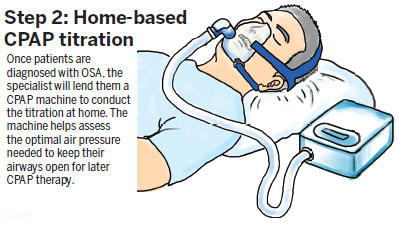
PWH is the city's only public hospital offering ambulatory service for diagnosing patients with suspected sleep disorders. The hospital will lend a machine for sleep test for suspected patients to conduct the test at home, saving them the hassle of coming to hospital and staying all night. Hui, who initiated PWH's home-based sleep apnea therapy, believes home-based procedures may be a long term solution to take the edge off the city's overburdened public healthcare system.
In Hong Kong, five out of every 100 middle-aged men have OSA. Hui notes that men suffer from it more than women.
The answer seems rather simple.
"When men reach middle age, more of them are obese. The increased neck fat might clog their airways, resulting in snoring, then pauses in breathing during sleep, which meets the definition for OSA," he explained.
Take the load off
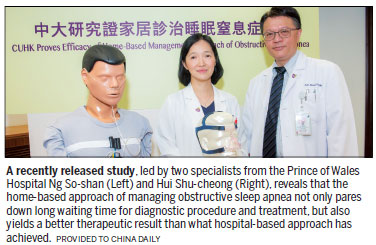
Every year, PWH treats more than 1,000 suspected OSA patients. About 400 take the clinical tests at home, after doctors have considered their competence to manage the tests by themselves and given them instructions how to take the tests. The rest are admitted to hospital wards.
"Despite a swarm of patients awaiting the sleep test, we have only four beds assigned for them," Hui told China Daily.
"If we hadn't initiated the scheme to split-flow the patients, the waiting time would be much longer."
The home-based approach in treating milder chronic diseases presents evident benefits for patients and frontline medical staff.
However, home treatment has limited application. First, it requires equipment that meets a high technical standard for safety and accuracy. Home-based sleep testing and its continuous positive airway pressure (CPAP) therapy for OSA patients is one example where home therapy is effective, Hui added. Kong is one of the hundreds of patients in PWH selected to receive ambulatory OSA therapy last year. Last January, he was given a CPAP machine with a tight-fitting face mask to conduct overnight CPAP titration at home.
CPAP titration is the first step toward curing obstructive sleep apnea therapy. It used to be done in hospitals, where doctors could assess the optimal air pressure needed to keep an OSA patient's airway open during future CPAP treatments.
The conventional hospital-based OSA diagnosis and treatment entails two-night stays at the hospital: first for the sleep test, then for the CPAP titration. The cost of the procedure, which incurred from hospital treatment and personal expense such as work leaves to get therapy and traffic expenditure, will be greatly reduced by 60 percent from HK$22,248 for hospital-based patients to HK$8,479 for home-based ones.
Nevertheless, after the CPAP titration, both at-home and hospital-based OSA patients still have to buy a CPAP machine to conduct the long-term CPAP therapy themselves at home. Kong uses the CPAP machine every day now. He says he's sleeping better and these days he stops breathing only about four times an hour, more than 90 percent less than before.
"I can finally go into deep sleep and feel rested during the day. What's more blessed is my blood pressure has retreated to a normal level," added Kong, who credits the CPAP machine for his improved health.
Not only does the home-based approach save time and costs, it's proven to yield better therapeutic results. CUHK did a study of the efficacy of sleep testing and CPAP titration, comparing ambulatory care and hospital-based care. The home-based approach showed significantly better results.
Among 172 patients with moderate to severe OSA, between September 2013 and August 2014, the "home-study group", who received sleep test and CPAP titration study at home, was found to be more responsive to CPAP treatment. They spent around five hours on average with the help of CPAP machine, within their three months of CPAP treatment. The hospital-based group whose tests done at medical wards spent 3.9 hours, 22 percent less.
"OSA patients felt more restful when sleeping in their own beds rather than hospital beds. In familiar settings, subjects became acclimated to the CPAP machine at home more readily," Hui explained.
The longer patients use the machine, the better the remedial effects. This partly accounts for why patients getting ambulatory OSA treatment lost much of their daytime lethargy, and had better cognitive functions.
In the meantime, the study showed that the patients' average waiting time between the first consultation and taking the diagnositc sleep test at home has been cut from 249 days at hospitals to just 59 days at home, a cut of more than 75 percent in waiting time.
Contact the writer at
honeytsang@chinadailyhk.com
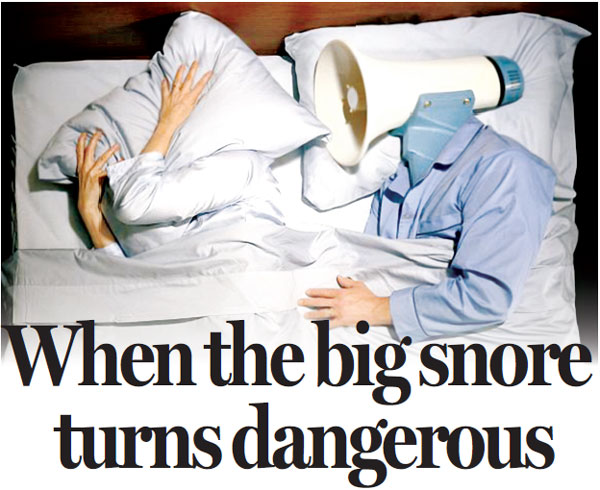
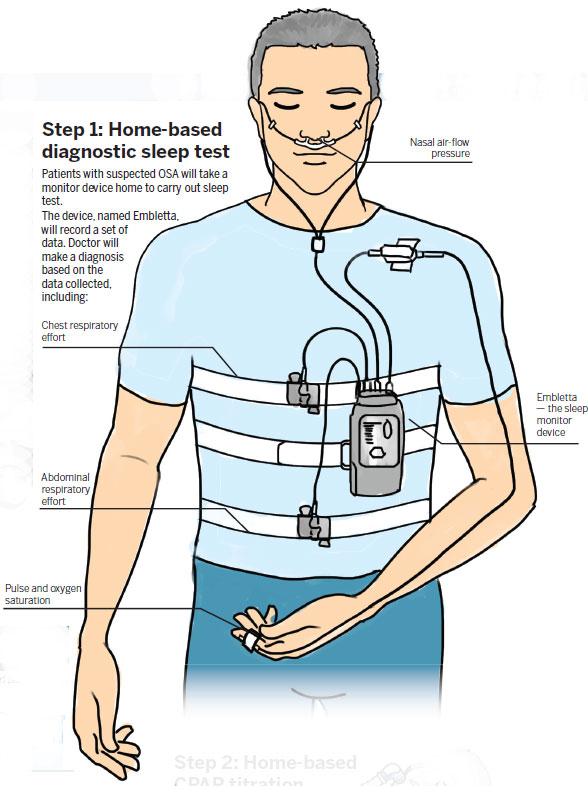
(HK Edition 09/01/2017 page6)












